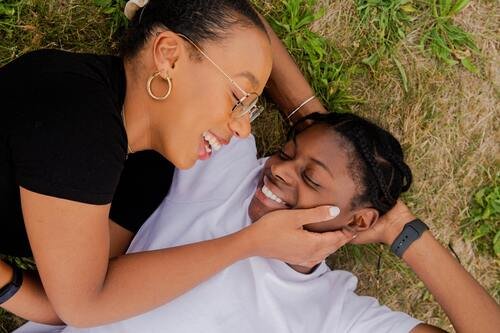Focusing on Healing your Attachment Wounds
You may be seeing more in the world about attachment styles and attachment wounds. I imagine that’s what brought you here.
You may be reading these words because you find it’s hard to trust in relationships that people care about you. You may find yourself repeatedly rejecting people who are interested in you, labeling them as boring or desperate.
You may be questioning if it’s normal to send a slew of texts to someone, accompanied by a growing fear that a slow response means horrible things.
You may find it hard to trust that someone could meet your needs.
If you share some of these thoughts, feelings, and experiences, I want to assure you that you are not alone. And yes, these experiences may be tied to attachment styles, and attachment injuries you’ve experienced (more on that explanation below).
I also want to assure you that there are steps you can take to land in relationships that support you and your needs. There are steps you can take to care for emotional hurts and attachment injuries that can help lead you to fulfilling relationships. You can work to start healing your attachment wounds. It may feel hard, but it is so worth the effort.
Menu:
- What is attachment trauma?
- How do you know if you have attachment trauma?
- Healing your attachment wounds: Can attachment issues be cured?
- How healing your attachment wounds can help your relationships
- How do you overcome attachment issues?
- How do you heal attachment issues in adults? Some extra tools for attachment trauma and healing
- Final thoughts on healing your attachment wounds
What is attachment trauma?
Attachment trauma comes from the idea that a caretaker did not consistently meet your needs when growing up. It’s rooted in the psychological ideas from Bowlby, who looked at how infants reacted when a parent walked away. How our parents and caregivers related to us as we were growing up can impact how we relate to others as adults.
Were the babies anxious? Did they get upset, and remain upset, having trouble coming back to their emotional calm?
Were the babies avoidant? Did they not react at all when their caregiver walked away, not showing any inkling of caring?
Were the babies secure? Did they initially get upset, but were able to calm again?
These reactions can be a clue of what kind of relationship the babies had with their caregivers. Attachment injuries happen when the caregiver isn’t consistently meeting the child’s emotional or physical needs.
In recent years, there has been a lot of work looking at how these patterns we learned in childhood can impact our relationships as adults.
As human beings we are operating with a nervous system that wants to protect us. As babies, we learn what is safe and what is not safe in the world. We learn a lot of that through how our caregivers teach us about the world. If we aren’t feeling OK, and our caregivers don’t help us feel safe again, it’s hard for our nervous system to find calm again.
If we grew up with a lot of attachment injuries, we may be left with attachment trauma. Attachment injuries may look like a caregiver ignoring you when you try to express yourself, or it could look like a caregiver having difficulty moving past their own feelings to give space to yours.
This can impact our relationships throughout our lives. If you find yourself struggling in relationships, this may be a factor. And I want to offer you hope that there are things you can do to shift when attachment wounds are impacting you. There are things you can do to work towards healing your attachment wounds.
How do you know if you have attachment trauma?
I’ve noticed a lot of people start exploring the idea of attachment trauma when struggling in dating, or in romantic or sexual relationships. That said, you may notice signs of attachment trauma in other relationships as well. That struggle in relationship is often what leads people to start looking at attachment trauma and healing.
Some signs you might notice as an adult that are a result of attachment trauma are: feeling heightened anxiety when waiting for others to respond to you; finding it difficult to trust that a slow response is due to something totally unrelated to your relationship; having difficulty believing someone can meet your needs.
You may find yourself needing a lot of reassurance that someone cares about you and wants to be with you.
Alternately, you might find that you become less interested in someone when they express interest in getting to know you, or when they express positive feelings about you. You may find yourself questioning others or pushing them away when they express interest in you.
I should note here that different people can bring out different reactions. Some relationships may leave you feeling more anxious, while others you may feel more avoidant in. Your attachment is not a fully fixed thing.
Usually, I find that both those reactions- needing a lot of affirmation that you are cared about or wanting to run away when you get affirmation that you are cared about- come from the same emotional place.
Usually, there’s a part of you that doesn’t want to get hurt. There’s a part of you that doesn’t trust that someone could be present and meet your needs. Your nervous system is trying to save you the pain of being let down by someone again.
Healing your attachment wounds: Can attachment issues be cured?
If you’re realizing that you have attachment wounds, it’s only natural for you to wonder if your attachment issues can be cured. The good news is that there is a lot you can do to start working on healing your attachment wounds.
Some of the work is addressing your own emotional needs, and some of the work may be looking to find people in your life who are secure. Being in relationship with a secure person can often help people with anxious or avoidant attachment ease some of the emotional upheaval that comes up in relationship.
How healing your attachment wounds can help your relationships
Taking time to look at how to experience attachment in relationships can help you ultimately feel more secure. You may find that by focusing on these areas of your life, you can end up in relationship with people who are consistent, and where you can feel loved.
Doing work in this area can also help you integrate the understanding that relationships can survive conflict. An argument doesn’t have to be the end. You don’t have to be perfect to be loved.
Through this work, you may find that you are able to increase your emotional tolerance. You may find that you can feel safer in yourself and in relationship.
You may find that you can grow more attuned to listening to your instincts rather than moving from a place of anxiety in relationships.
How do you overcome attachment issues?
I remember seeing a therapist (I wish I could remember who it was) write somewhere that hurt happens in relationship, so healing must happen in relationship. I think this is important to remember, because operating in relationship is part of the path of overcoming attachment trauma and healing.
AND being aware of yourself and learning your needs along the way will help in your journey to overcoming attachment issues. Honestly, we can also look at this at work to heal your relationship with yourself.
If you’re wondering how you recover from insecure attachment, there are a couple things you can start trying to help you. One thing to notice is when someone responds neutrally or doesn’t respond immediately, and you feel that as a sign of something negative. In those moments, it’s worth taking time to explore what other stories there might be. A favorite question of mine in these moments is: “what else may be true?”
You can also take a few moments to find those things that calm your nervous system when you are feeling anxious. That may be taking a walk, and focusing on what it feels like for your feet to hit the ground. It might mean turning on a favorite song that brings positive feelings. It might be a weighted blanket. Or it might mean reaching out to a friend.
It’s also worth noticing if you’re judging your anxious moments. As human beings, we are wired for connection, and it’s OK to reach out for connection. There is room to give yourself compassion for those needs. It does not mean that you are “too needy” or “too emotional.”
And if you find yourself thinking that a person who is showing you interest is boring or desperate, can you push back on that narrative? What if showing interest is just that- the person is interested in you?
And sometimes the work includes parenting yourself. What do I mean by that? If your parent wasn’t able to ask you what you need and to respond accordingly, this is a question you can start asking yourself. It may take practice. You may not be used to people asking what you need.
Sometimes, people are so used to pushing away their own needs, that it’s hard to figure them out. If that’s you, you’re not alone. You can offer yourself time and compassion.
Check in to notice how your body responds to different experiences and ideas. Notice if there are parts of your body that are tense, or light, feel stuck or heavy, or feel light and free flowing. Check in to see if these sensations are pleasant or unpleasant. These check ins are meant simply to give you information.
You can use this information to decide how you want to move forward.
How do you heal attachment issues in adults? Some extra tools for attachment trauma and healing
I talk about healing your attachment wounds a bit in the section above, but I want to offer a couple other tools and resources that you might find helpful.
If you’re a reader, there seem to be a growing number of books around these themes.
The book Attached is commonly recommended (though I would recommend this more for people who fall in the anxious attachment than those who fall in the avoidant area), as is the book Hold Me Tight. Polysecure is another book that does a nice job of discussing attachment types, and tools for working through them. While that book looks at attachment with the frame of consensual nonmonogamy, I think it can be helpful for all kinds of relationships.
If you are able to have the resources to find a therapist who works on healing attachment trauma, that can be beneficial as well. I want to recognize that therapy is a privilege that not everyone has access to. I want to honor that there is more than one way to work on healing attachment trauma.
If you’re thinking, “how do I find an attachment therapist near me?” there are a couple resources I recommend. For online directories of therapists, I like InclusiveTherapists.com. If you’re looking for therapists who accept lower fees, you can try OpenPathCollective.org. Or you may just start by googling “attachment therapist near me,” and see who might feel good to work with.
And remember, when you are looking for a therapist, you can ask how they work, and what therapy with them would look like. You can outright ask for their thoughts and approaches to healing attachment trauma.
Final thoughts on healing your attachment wounds
If you’re reading these words, that’s a great step to take! It can be hard work to look at yourself, and how you operate in relationships. That said, I know and have worked with so many people who have grown through this work. Myself included.
If you’re here, welcome to the journey. The steps can be hard, but they are oh so worth it.
Kate O’Brien, LCAT
Kate is a licensed therapist in New York. She works with people who grew up in challenging families, who have experienced emotional trauma or neglect, codependency and grief. Learn more here or schedule a consult call here if interested in working with her.






